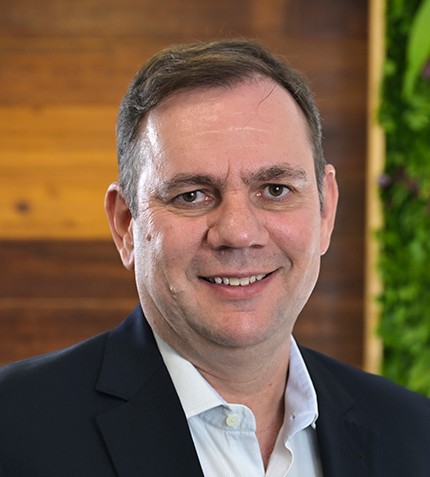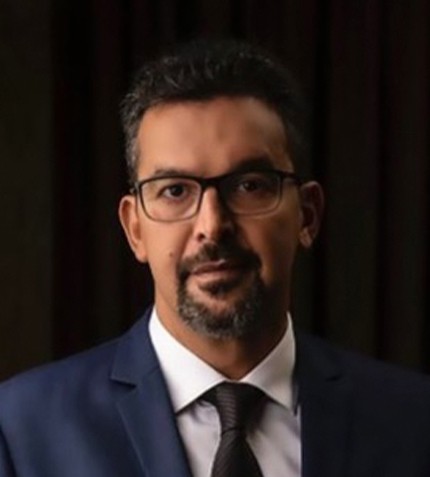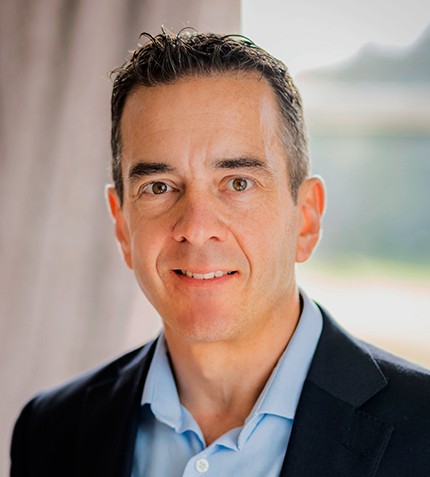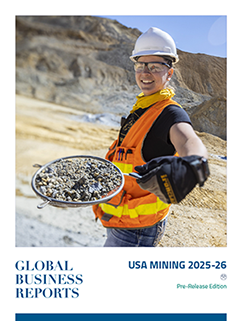
"In 2025, we aim to produce approximately 15 million t of pellets, which positions us as one of the largest exporters globally, as we were in the past."
Rodrigo Vilela
CEO, SAMARCO
Can you share the latest updates from Samarco in the past year?
We successfully consolidated our operations and completed 2023 without any environmental and safety incident and surpassed all our financial and safety goals for the year. One significant achievement was the renegotiation of our debt. In June 2023, we negotiated our debt while in judicial recovery. Today, we have an established payment plan, which is extremely important for the company's future. In the same year, we also approved an investment of over R$1.6 billion to expand our production to 60% of capacity. That investment aims to expand our operations, adhering to our commitment to not operate with tailings dams and to construct new filtration systems. We initiated the project in 2023 and look forward to starting 2025 with a production capacity that has doubled. In 2025, we aim to produce approximately 15 million t of pellets, which positions us as one of the largest exporters globally, as we were in the past.
We utilize ore pipelines to transport concentrates from both of our processing plants. This has sustainability benefits, as we do not have to use trucks and consume fuel for transport.
What progress has Samarco made in the de-characterization of tailings dams?
Our team is making substantial progress, achieving 75% completion on the de-characterization project. Last year, we completed the de-characterization of one of our dams. This entire process is conducted under strict oversight and audited by international organizations and local authorities to ensure compliance with safety regulations. We have undertaken significant efforts to ensure the Germano dam is safely de-characterized and securely returned to the environment.
Can you discuss the labor force expansion at Samarco?
We are expanding our operational workforce in Minas Gerais and Espírito Santo.
We hired around 600 direct employees in recent months. Last year, we initiated a comprehensive program called "Portas de Entrada," which focuses on training young individuals, particularly emphasizing gender and racial diversity in our workforce. In preparation, we opened vacancies for operators in advance, providing training courses in local communities. We have trained around 440 individuals and invested about R$2 million in these programs. We increased the representation of women in our operations from around 7% to 15%, and overall female representation increased from 18% to 22% within a year. We now have around 15,000 employees, which exceeds our pre-2015 workforce numbers.
What challenges does Samarco face in its operations?
The primary challenge is consolidating our operations while introducing new technologies, particularly finding uses for our waste materials. We are already constructing roads and pavements using these by-products, representing a significant challenge for the entire industry, not just Samarco. While we have secured the necessary licenses to operate at 60% capacity, obtaining licenses to reach 100% capacity remains a challenge. The licensing process in Brazil is intricate and requires approvals from multiple regulatory bodies. But we are confident and dedicated for fulfilling the all steps of that licensing process.
How does Samarco view global iron ore markets?
Our global iron ore market perspective is quite positive, particularly for high-quality minerals. We see a robust demand driven by global decarbonization initiatives and the need for reduced emissions from our clients, typically in the steel industry. Our customers have noticed a significant trend shifting toward using higher-grade iron ore. Given that we produce high-quality pellets, this shift presents an opportunity for us. Moreover, Brazil is well-positioned to supply products with significantly lower emissions than our competitors. Our production process utilizes clean energy, and our operations are designed to minimize emissions. Despite potential cyclical downturns due to geopolitical tensions and ongoing crises in various regions, the long-term fundamentals for our sector remain very promising.
What are Samarco's future plans?
Over the next 12 months, we are optimistic about significant production growth. We are dedicated to playing a crucial role in the reparative processes for the damage caused by the collapse of the Fundão Dam. Over the past two years, we have participated in discussions with federal and state authorities and our shareholders to establish a process. We are very optimistic about the future and committed to responsibly advancing our operations while prioritizing sustainability and community engagement.










